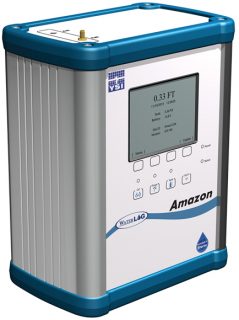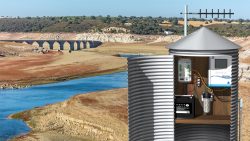FROM YSI, GOLD SPONSOR OF 2018 WALPA CONFERENCE
by Dr. Stephanie A. Smith, YSI Product Segment Manager
 The environmental impacts of climate change are apparent, from flood to drought. However, climate change can also impact our equipment choices for measuring water level, as more drastic swings in an environmental system become the new normal. When climate-driven cycles of flood and drought are monitored within a single system, popular technologies like radar may perform sub-optimally at very low water levels that expose interfering features along river banks or beds. Pressure transducers often will require recalibration if left to dry out. A bubbler, however, keeps working through those dry cycles, delivering reliable data even after a creek or river bed runs dry and then fills again.
The environmental impacts of climate change are apparent, from flood to drought. However, climate change can also impact our equipment choices for measuring water level, as more drastic swings in an environmental system become the new normal. When climate-driven cycles of flood and drought are monitored within a single system, popular technologies like radar may perform sub-optimally at very low water levels that expose interfering features along river banks or beds. Pressure transducers often will require recalibration if left to dry out. A bubbler, however, keeps working through those dry cycles, delivering reliable data even after a creek or river bed runs dry and then fills again.
If properly maintained, bubblers will deliver years of high-quality data. However, this technology does have a vulnerability that users cannot ignore: the air taken in by the internal compressor must be moisture-free. In every instrument there is a desiccator that prevents moisture from reaching critical instrument components required to make water level measurements.
These components include a number of electronic valves that open and close during a measurement and which are on the internal manifold of the bubbler. If exposed to moisture for long periods, these valves or their seals can corrode, causing them to malfunction. This results in erratic measurements and data that may be invalid.
Moisture can even block internal airways before a bubble enters the orifice line. This means that additional pressure may be required to force the bubble out, and the water level measurement will not be accurate. The compressor might also become overworked and fail. Over time, bubbling might cease altogether, and components can be irreversibly damaged.
The simple preventive measure for these issues is to maintain your instrument’s desiccant. But how often should desiccant be swapped out? The answer depends upon the relative humidity and total volume of air taken in over a period of time, which is not simple to gauge.
Remove the guesswork by choosing a desiccant that employs a silica gel indicator, changing from a blue color to pink as it becomes saturated with moisture. This super-simple, inexpensive step can make maintenance a breeze and keep a bubbler running for years.
We hope this tip will help you get years of great use from your bubbler technology!
- ¬ For other bubbler tips, check out this Technical Note from YSI!
- ¬ Visit YSI.com/Amazon to take advantage of a special offer on our latest bubbler technology!










